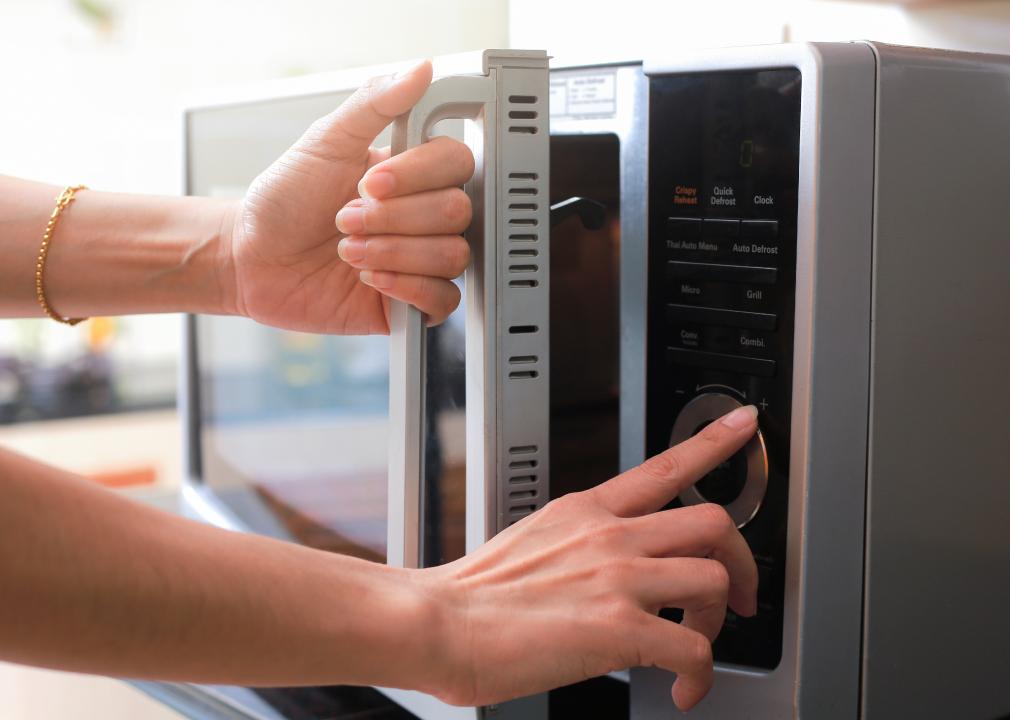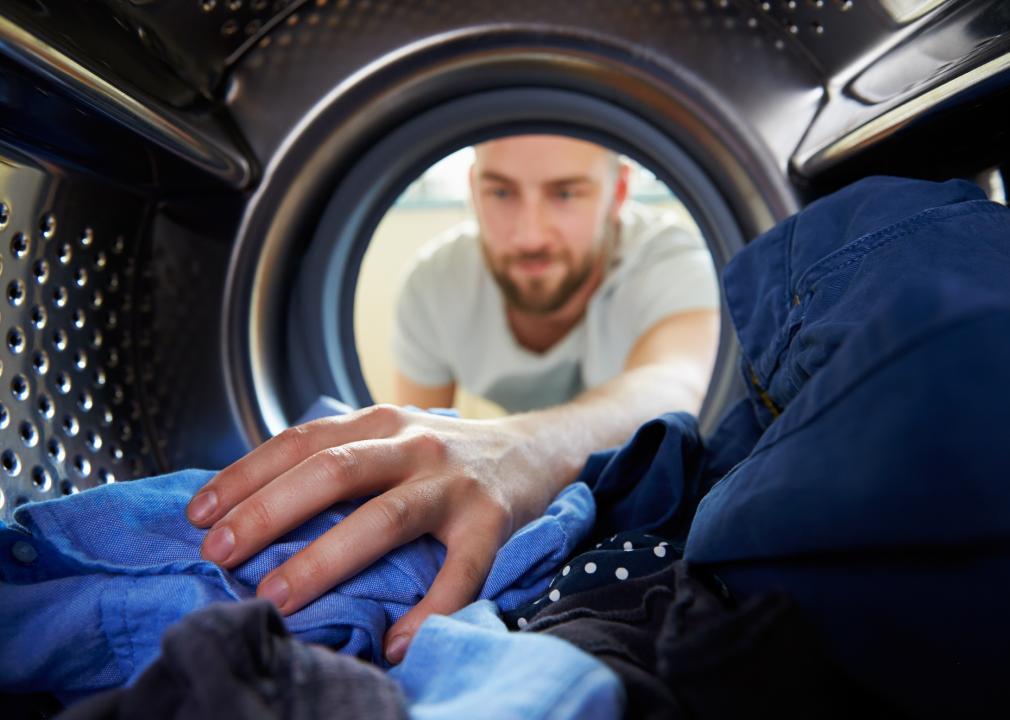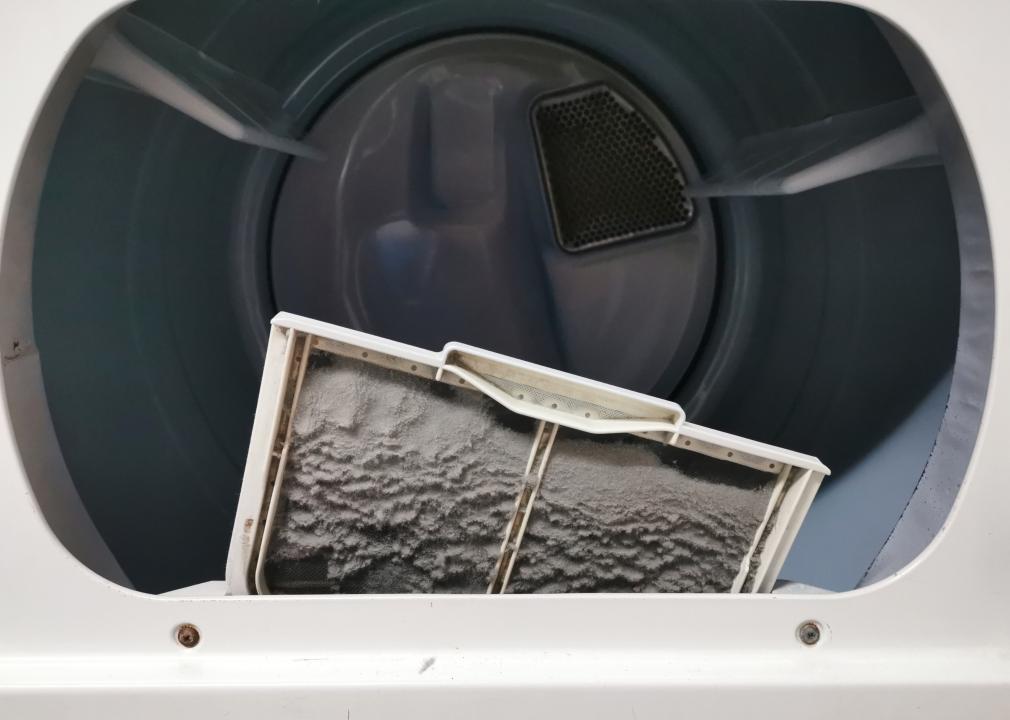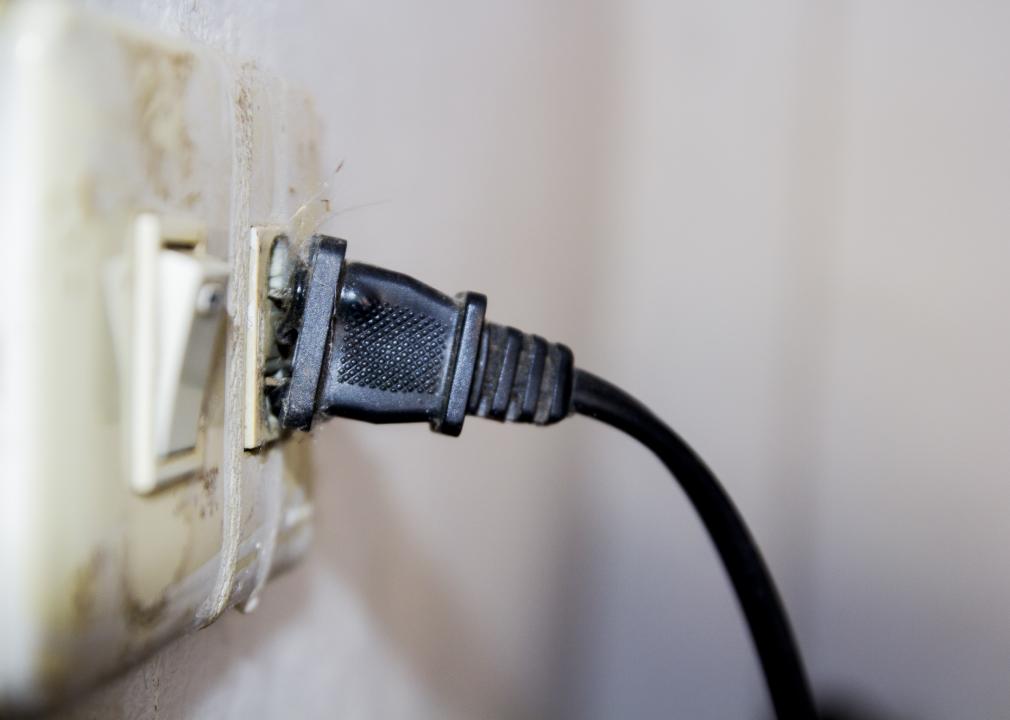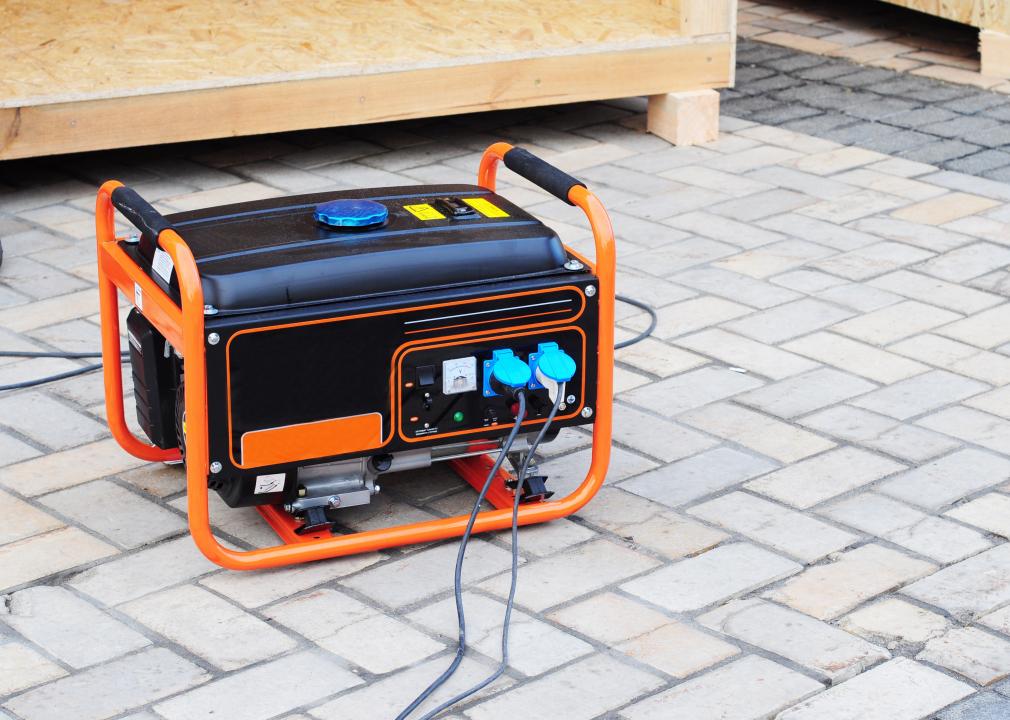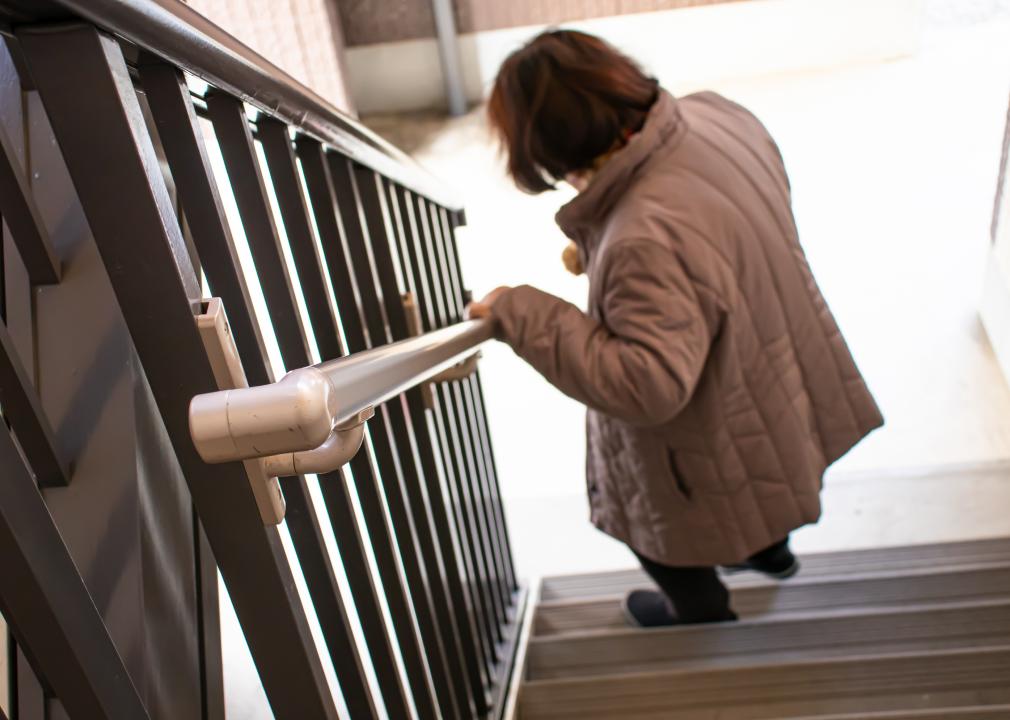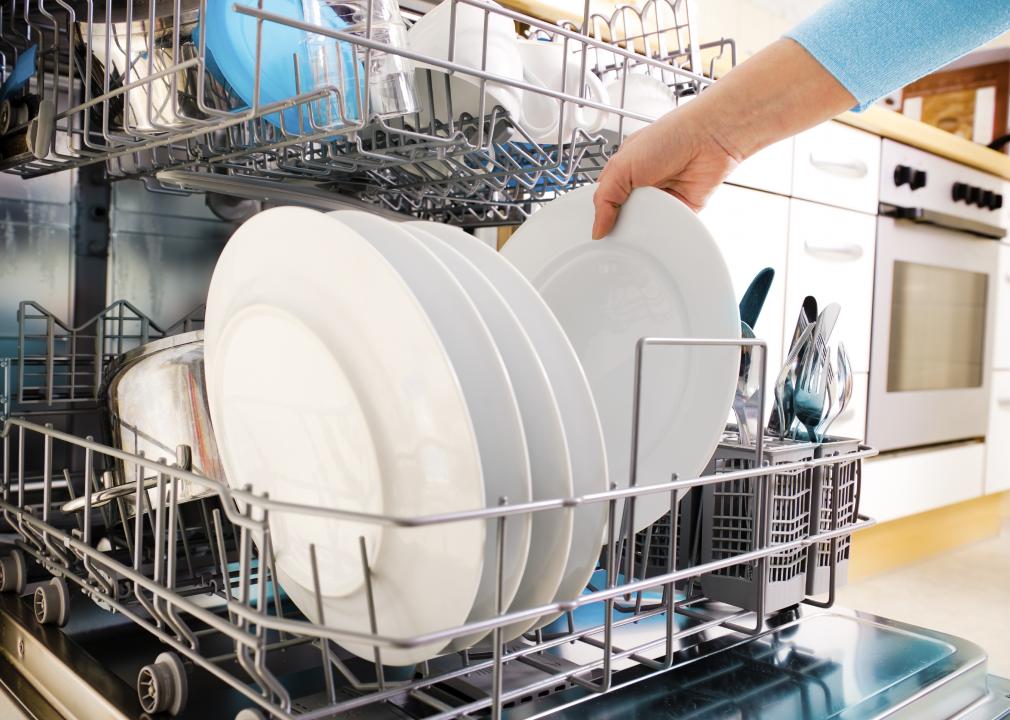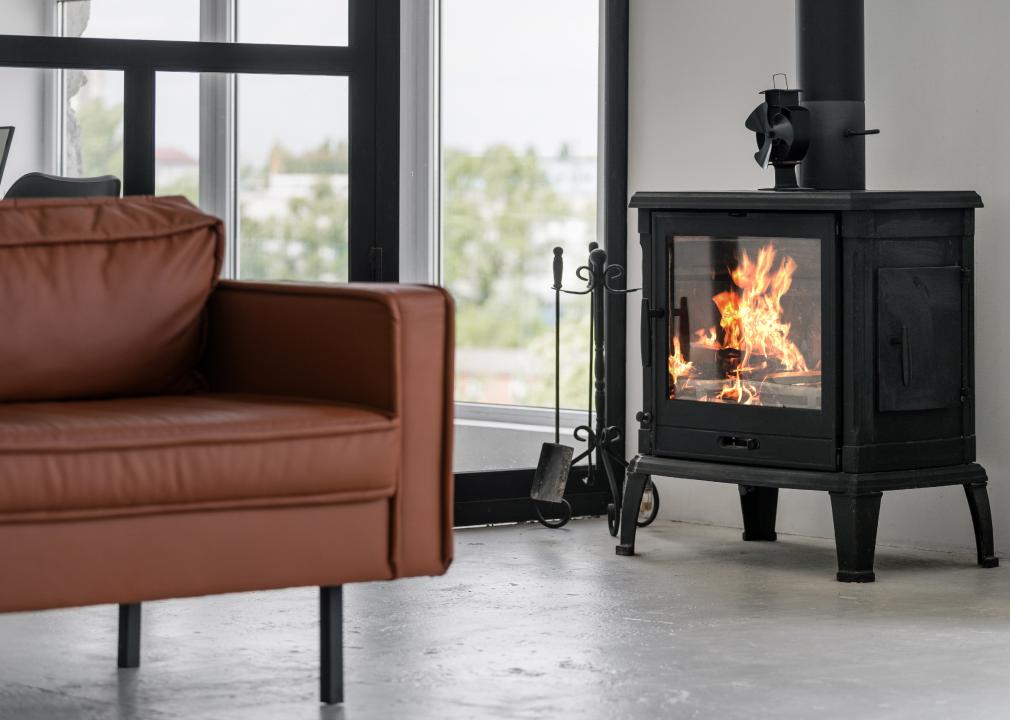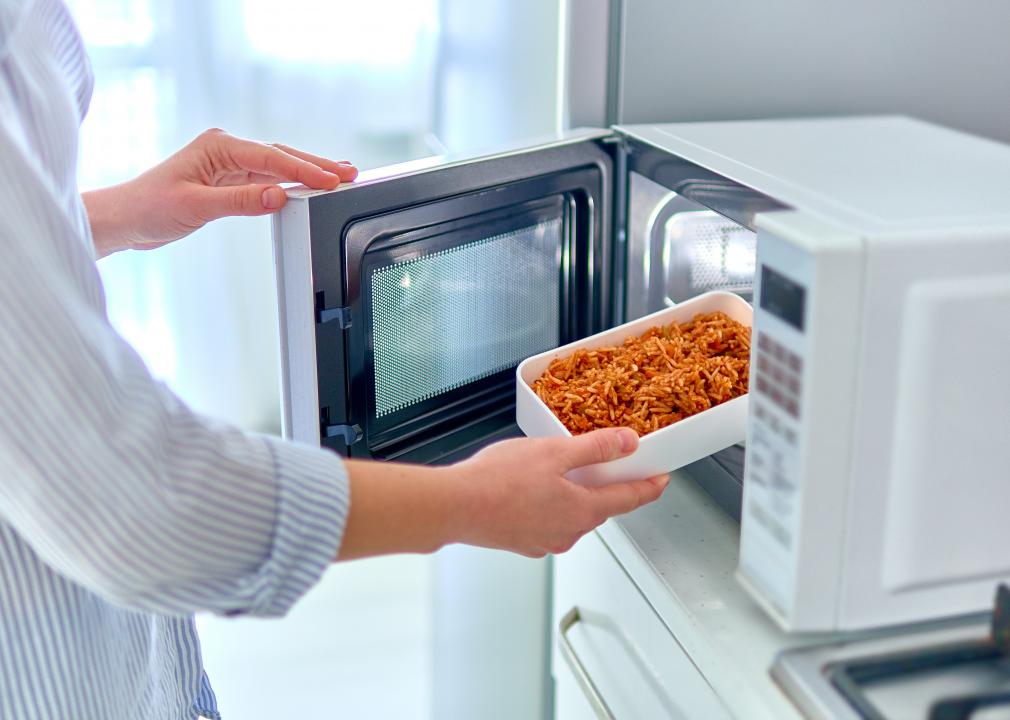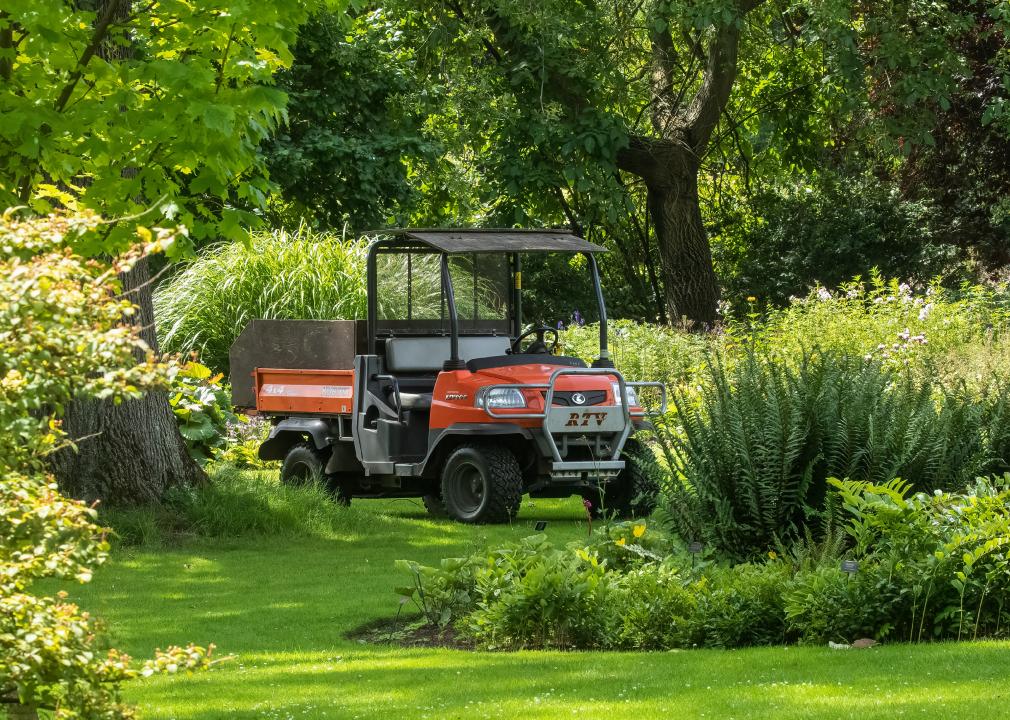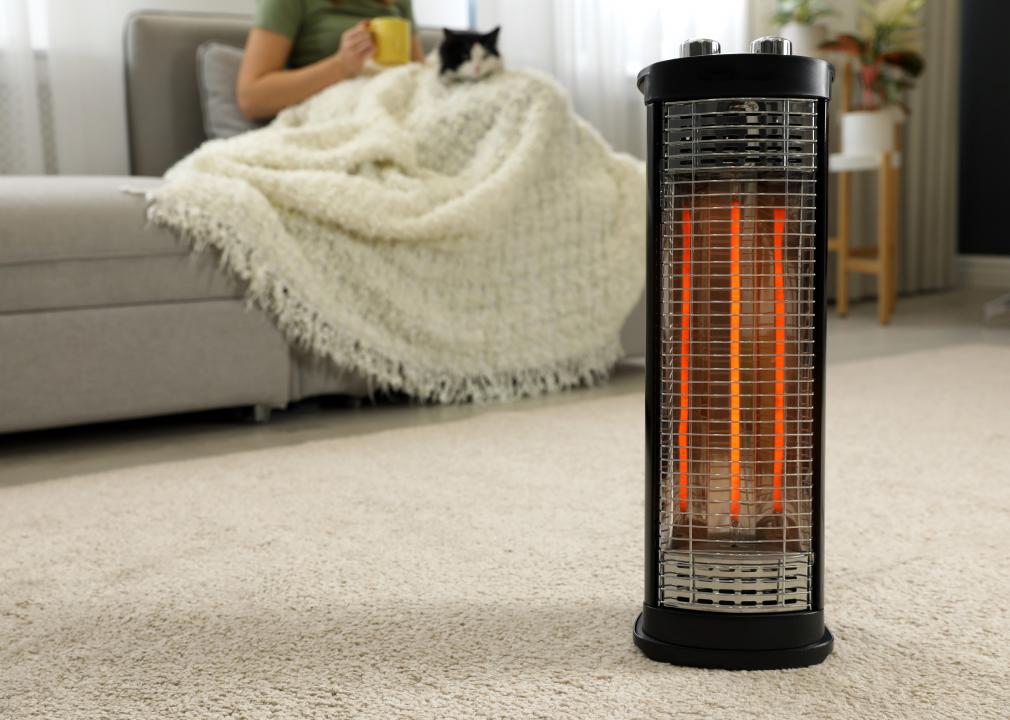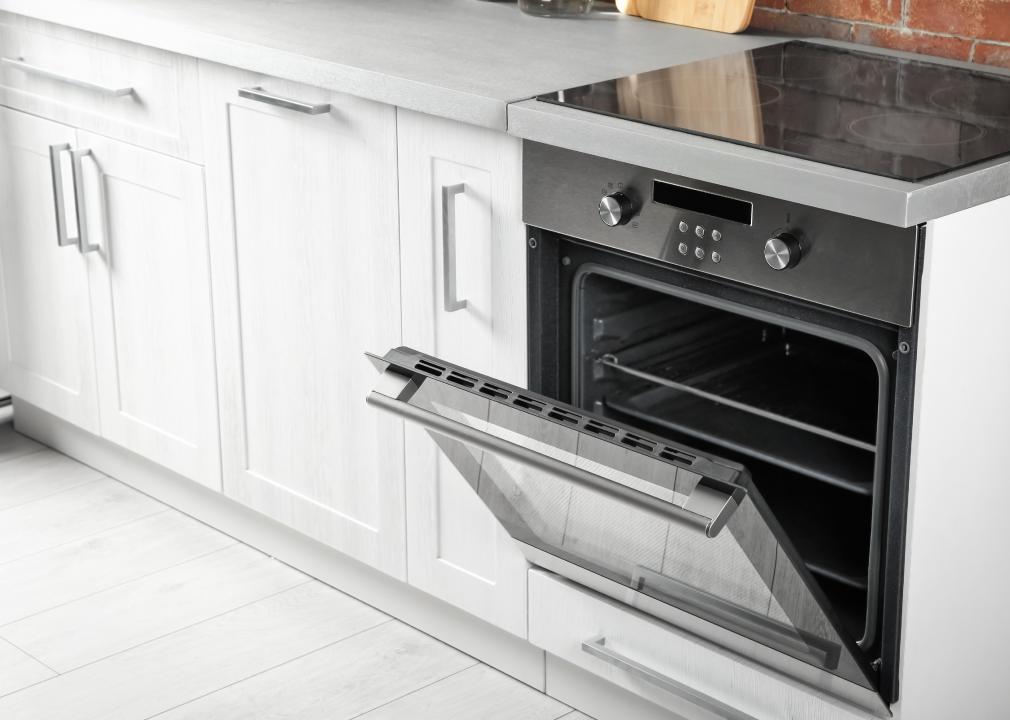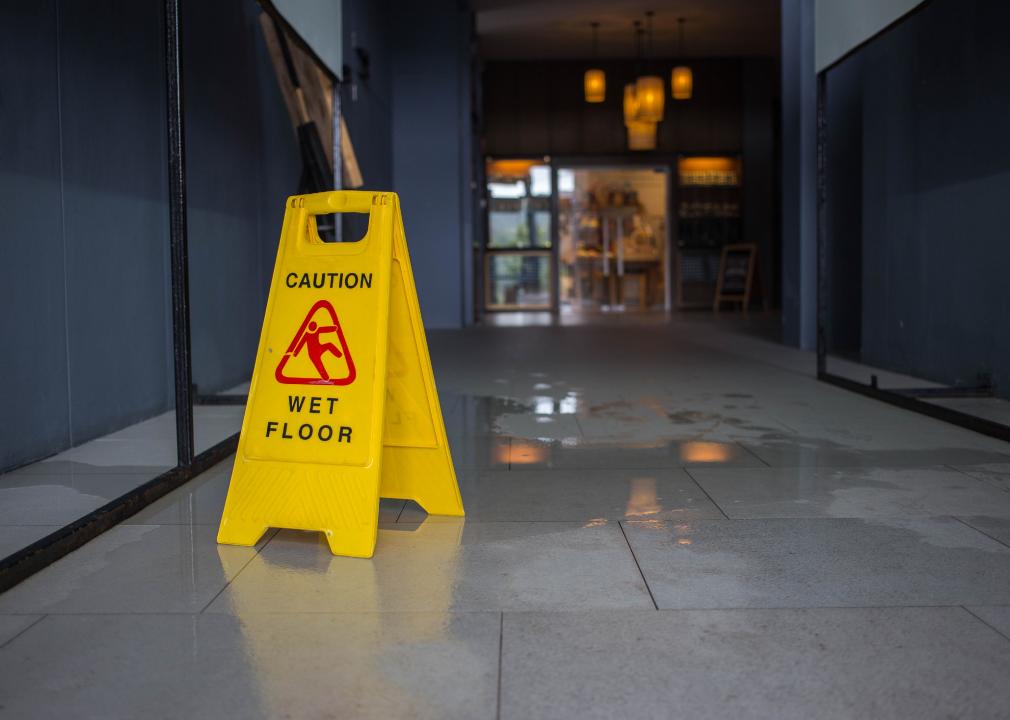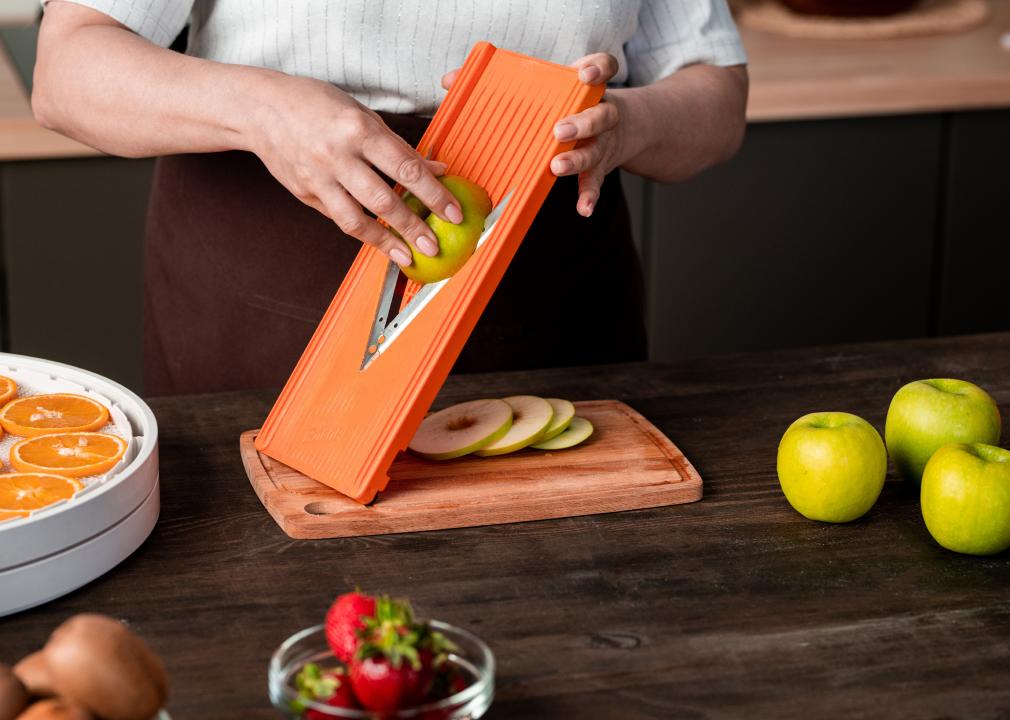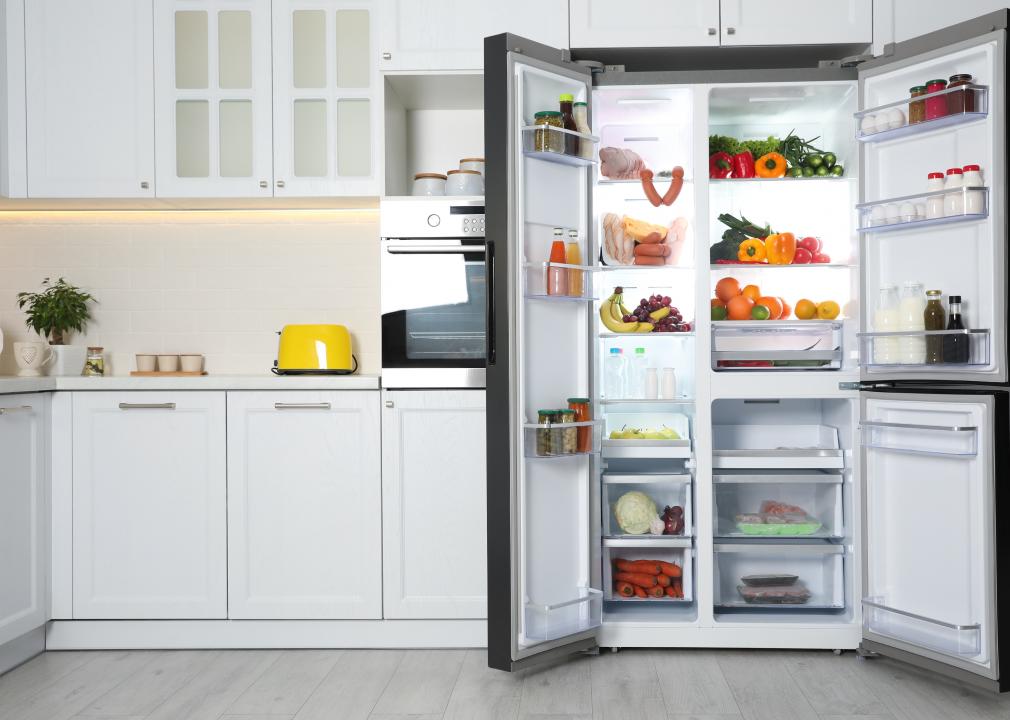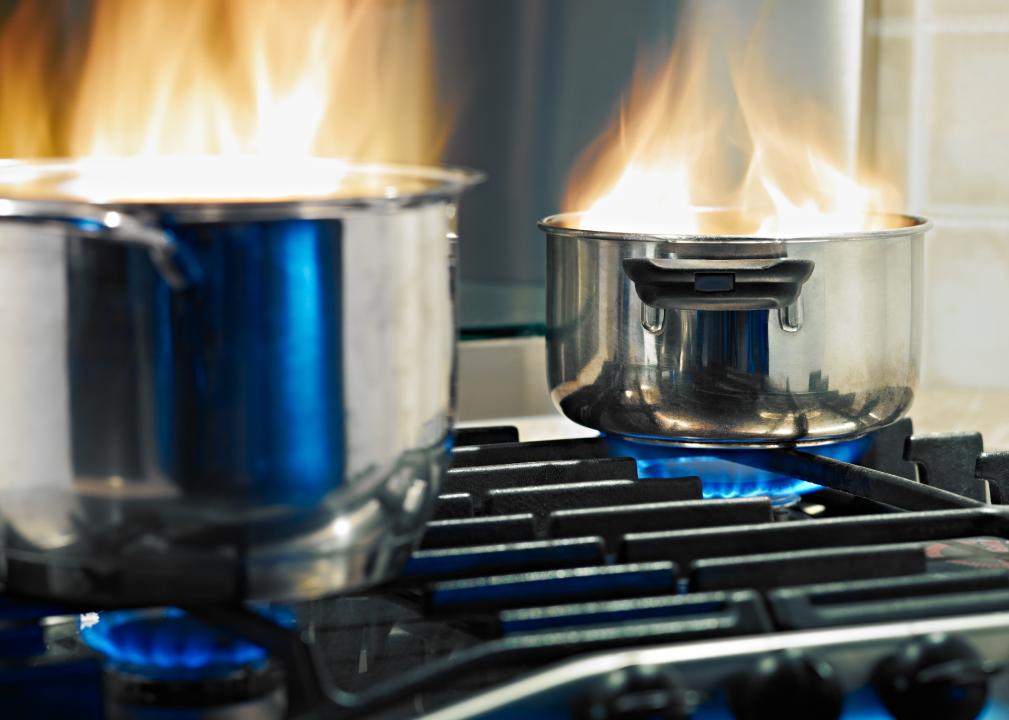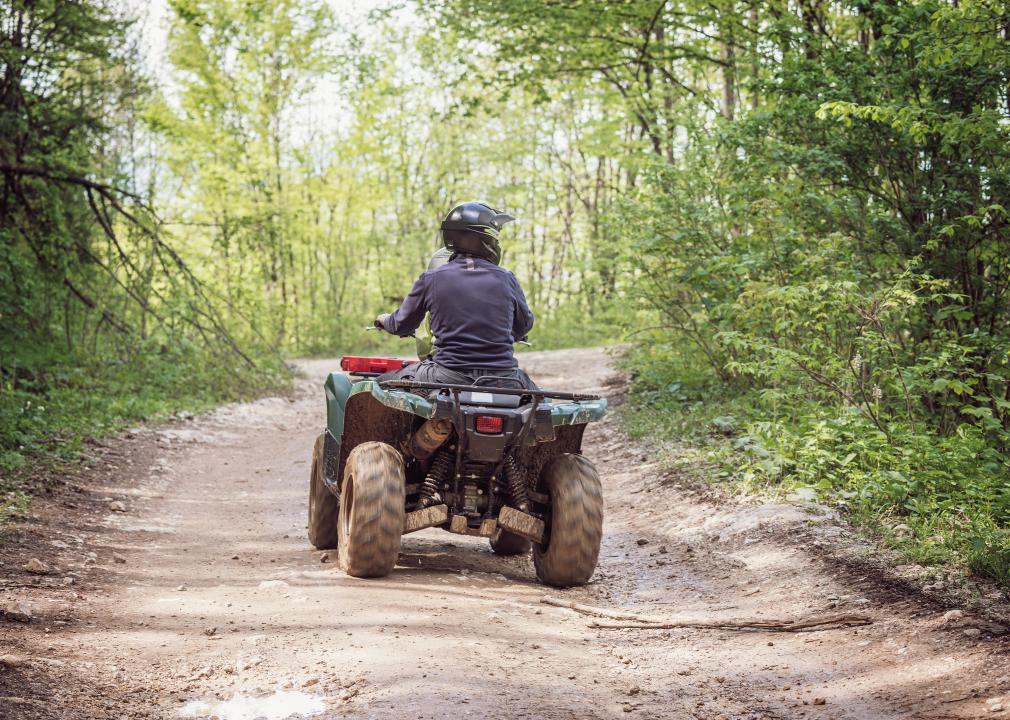Consumer products with the most injuries in 2020
Zyn Chakrapong // Shutterstock
Consumer products with the most injuries in 2020
Getting your hand caught in a washing machine. Losing your Thanksgiving turkey in an oven fire. Falling into a swimming pool, slipping down a flight of steps, struggling with carpal tunnel syndrome after too many hours at your computer. Products that surround us at home and work can lead to injuries from minor to deadly.
BuyersGuide.org analyzed data from the U.S. Consumer Product Safety Commission’s National Injury Information Clearinghouse (CPSC) to determine which consumer products are associated with the most injuries. More than 20,000 incidents occurred in 2020 and included reported deaths. The CPSC collects reports through an online form, a hotline, and a mailing address, and also relies on death certificates and injury incident files from federal and state agencies, local consumer advocacy groups, and public health and safety organizations.
But there are things you can do to make your surroundings less dangerous as you go about your daily life: Appropriate gear can protect you on an all-terrain vehicle. Regular maintenance of your clothes dryer can cut the chance of a fire. The proper placement of a space heater will keep you toasty and safe.
Read on to learn what hazards you face and how to keep you and your loved ones safe.
![]()
oleksboiko // Shutterstock
#30. Two-wheeled powered off-road vehicles
– Total reported injuries: 85
– Reported deaths: 43
In a 2017 study, a group of doctors within Michigan’s Beaumont health care system found the most common injuries associated with dirt bikes and all-terrain vehicles were to the shoulders, wrists, feet, and ankles. To stay out of the emergency room, the doctors recommend avoiding wearing loose clothing that can get caught on branches or even on the bike. Wear boots and long pants, and leave sandals and scarves at home. Never drink or use drugs and drive, and only ride during the day. Take advantage of training from the ATV Safety Institute and the Official Offroad Vehicle Safety Courses.
Monkey Business Images // Shutterstock
#29. Washing machines
– Total reported injuries: 88
– Reported deaths: None
Most injuries associated with washing machines happen when someone reaches in to remove the clothes before the machine has completely stopped spinning. Injuries can range from abrasion to a broken hand or arm. Also be on the lookout for fires, often as a result of an electrical malfunction. The National Fire Protection Association reported 620 fires related to washing machines between 2010 and 2014 and $7 million in property damage in addition to injuries.
TONGYANGNGEE // Shutterstock
#28. Clothes dryers
– Total reported injuries: 88
– Reported deaths: 11
Clothes dryers pose a risk of fire, particularly from users failing to clean out the lint filter before use. Other causes can include an electrical malfunction or the clothes themselves catching fire. The U.S. Fire Administration reports 2,900 fires each year that result in $35 million in property loss in addition to the deaths and injuries. Many of the fires happen in the colder months, during the fall and winter, with most occurring in January. The Fire Administration also recommends removing lint from the vent pipe every three months.
Cmspic // Shutterstock
#27. Built-in swimming pools
– Total reported injuries: 90
– Reported deaths: 83
Swimming pools can be a danger to young children especially, but there are steps you can take to make them safer. Build a fence around your pool, often a local requirement, and install an alarm to let you know if someone opens the gate. Even more sophisticated: a motion sensor that will warn you if anyone jumps or falls into the pool. Forgo a diving board, keep a first aid kit nearby and learn CPR. Also, store the chemicals used for the pool in a safe place out of reach of children.
Africa Studio // Shutterstock
#26. Computers (equipment and electronic games)
– Total reported injuries: 91
– Reported deaths: 1
Long days in front of a computer screen can cause a host of injuries, from carpal tunnel syndrome, headaches, and eye strain to back and neck pains. A proper set-up is key to avoiding injuries along with frequent breaks. Your eye level should be about two inches below the top of the monitor, which should be about an arm’s length away. Make sure your head and neck are straight, keep your shoulders relaxed, your elbows at 90 degrees, your wrists flat on your keyboard, and your feet flat on the ground. Also take care to avoid laptop fires that can occur thanks to lithium batteries, especially if you’re charging your laptop on a couch or bed.
Fotos32 // Shutterstock
#25. Electric wire or wiring systems (excluding panelboards receptacles or interrupters)
– Total reported injuries: 102
– Reported deaths: 15
Electrical wiring that has become unsafe can cause shocks and fires. Be on the lookout for cracked insulation, loose connections, overheated cords, or even cases where mice have chewed through wires. Watch for danger signs: Flickering lights, discoloration around outlets, blown fuses or tripped circuit breakers, a buzzing sound, or a burning smell can all indicate a possible problem.
Radovan1 // Shutterstock
#24. Generators or power plants
– Total reported injuries: 104
– Reported deaths: 48
Generators can be life-savers when the electricity goes out, but they are risky to use. The key dangers are carbon monoxide poisoning from the engine’s exhaust, fire, burns, and electric shock or electrocution, according to the Consumer Product Safety Commission. Most deaths associated with generators are a result of carbon monoxide poisoning when used inside the house. Never use generators in garages or sheds either—even with doors and windows open. Carbon monoxide can kill someone in minutes.
Maya Kruchankova // Shutterstock
#23. Candles, candlesticks, and other candle holders
– Total reported injuries: 109
– Reported deaths: 13
Candles can be romantic and festive, but they pose a great risk of fire. Christmas is the most common day of the year for fires sparked by candles, while over the entire month of December, more than one-tenth of the fires originate with decorations. Throughout the year, about a third of candle fires begin in bedrooms, and about one-tenth start because someone has fallen asleep. Make sure all candles are out before going to bed.
rblfmr // Shutterstock
#22. Mopeds or power-assisted cycles
– Total reported injuries: 113
– Reported deaths: 67
A moped or electric scooter can be a great way to get around, even to commute to work or school, but be sure to ride safely. Think about wearing a helmet even if your state does not require it. Face and head injuries have tripled in the last decade, according to a 2019 study from Rutgers University conducted in New Jersey. Most of those injured were men between 19 and 65, but about a third were children between 6 and 12. Kids sometimes ride scooters marketed as toys that in reality can reach speeds of up to 30 miles an hour, according to one of the study’s co-authors, Amishav Bresler.
popokoko-nyanya // Shutterstock
#21. Stairs or steps
– Total reported injuries: 115
– Reported deaths: 115
Falls down a set of stairs, steps, and elsewhere are a leading cause of injury in older people, according to the Centers for Disease Control and Prevention. One in five falls results in a head injury, broken bones, or another serious condition. Railings on each side of the steps can help prevent falls, and it’s vital to repair broken or uneven steps. Also, make sure your home is well lit and that any tripping hazards are out of the way.
Alexander Raths // Shutterstock
#20. Dishwashers
– Total reported injuries: 118
– Reported deaths: 1
Your plates and glasses might look clean, but your dishwasher could be rife with bacteria and fungus, according to a 2018 study from European researchers. Though most people probably won’t get sick from dishwasher bacteria, someone with a compromised immune system could be at risk. The most common bacteria found in dishwashers were Pseudomonas, Escherichia, and Acinetobacter, which can cause infections in those with weakened immunity. The most common fungus were Candida, Cryptococcus, and Rhodotorula, which behave similarly. Another injury associated with this household appliance is when young children harm themselves with sharp objects such as knives while unloading the dishwasher.
brizmaker // Shutterstock
#19. Coal or wood-burning stoves
– Total reported injuries: 122
– Reported deaths: 4
Stoves might lend a cozy warmth to your home, but they can be bad for your health. Burning coal and wood releases fine particulate matter, which heightens the risk of lung cancer, strokes, heart attacks, irregular heart rhythms, and heart failure. The Environmental Protection Agency warns the fine particles can trigger asthma and cause bronchitis as well. Stoves also pose a danger of fire: Each year wood stoves cause more than 4,000 home fires, according to the U.S. Fire Administration.
Wlad Go // Shutterstock
#18. Snowmobiles (activity apparel or equipment)
– Total reported injuries: 139
– Reported deaths: 69
The leading causes of snowmobile accidents are speeding, alcohol use, inexperience, and poor judgment. Injuries often involve fractures, but they can also involve fatal head injuries. An analysis of accidents in New Hampshire over the 2019–20 winter put inexperience at the top of a list of causes. One way to cut the number of accidents could be to increase safety training. Some tips from the Minnesota Department of Natural Resources: Don’t drink and drive; don’t ride alone; wear a helmet, face mask, and layers of clothes to stay warm; and avoid riding on lakes and rivers.
goffkein.pro // Shutterstock
#17. Microwave ovens
– Total reported injuries: 148
– Reported deaths: 3
When it comes to injuries, microwaves are most likely to cause burns. Take care when you remove a wrapper to avoid any escaping steam. Before you take food from a microwave, let it cool for a bit. You might consider boiling water on a stove instead of in a microwave, because microwave heated water can erupt, according to Consumer Reports. A group of pediatricians lobbied for a new safety feature—child-resistant doors—because too many children are scalded removing soup and other liquids from microwaves, CBS News reported.
ppa // Shutterstock
#16. Gas ranges or ovens
– Total reported injuries: 150
– Reported deaths: 6
Unattended stoves are a leading cause of cooking-related fires, according to the National Fire Protection Association. If cooking oil ignites, do not douse the fire with water because it could easily spread. Instead, smother it or use a fire extinguisher. Another common hazard is when items are left too near the stove, whether food wrappings, potholders, or dish towels. Gas appliances also pose a higher risk of causing respiratory illnesses because of the carbon monoxide, formaldehyde, particulate matter, and nitrogen dioxide they emit.
Jason Sponseller // Shutterstock
#15. Fireworks
– Total reported injuries: 165
– Reported deaths: 18
Fireworks can cause serious burns and eye injuries, and even blindness, the Consumer Product Safety Commission and Johns Hopkins Medicine warn. Only adults should set them off. As for children, remember, even sparklers can be dangerous as they burn at a temperature of about 2,000 degrees, according to the commission. Be wary of fireworks sold in brown paper because they most likely are meant for professional displays. Always have a bucket of water or fire extinguisher nearby in case of fire.
Pixel-Shot // Shutterstock
#14. Beds or bedframes
– Total reported injuries: 174
– Reported deaths: 152
The Consumer Product Safety Commission has long warned about placing children under the age of 2 in adult beds. This is due to the danger that they could get entangled in the bed and blankets, dying from strangulation or suffocation. Adults also need to be aware of how their mattress might be affecting their health. One with too little support could cause back issues and other pain. And if your mattress is home to dust mites, you might find yourself having an allergic reaction to their feces.
Dawn Quadling // Shutterstock
#13. Utility vehicles
– Total reported injuries: 188
– Reported deaths: 122
Utility vehicles are increasingly popular on farms and ranches for small jobs. They have four or six wheels and a cargo bed that can be used to move supplies, feed, and even newborn calves. This is according to Ag Safety and Health CoP, or the Agricultural Safety and Health Extension Community of Practice, a collaboration among universities, industry, and government. It recommends slowing down on any rough ground and staying away from ditches to decrease the risk of overturning. A passenger should ride in their own seat, cargo should be secured, and anyone riding should not use drugs or alcohol.
YanLev // Shutterstock
#12. Swimming pools
– Total reported injuries: 191
– Reported deaths: 159
Aside from posing a risk for drowning, swimming pools can be the source of such illnesses as diarrhea, skin rashes, coughs, and eye and ear infections, according to the Centers for Disease Control and Prevention. What the CDC calls recreational water illnesses are spread when you swallow water that’s been contaminated with germs. The most common illness is diarrhea. One possible contaminant, cryptosporidium, can be life-threatening for people with weakened immune systems, including those with cancer and HIV. Treating swimming pools with chlorine or bromine and pH keeps contaminants under control.
New Africa // Shutterstock
#11. Heaters or heating systems
– Total reported injuries: 193
– Reported deaths: 30
Space heaters contribute to 43% of fires related to home heating but there are ways to use them safely. Place them on the floor and turn them off when you go to sleep or even leave the room. Keep space heaters clear of flammable objects and pay attention to the 3-foot rule: the minimum distance it should be from drapes, bedding, or anything else that could catch fire. Do not use an unvented space heater powered by flammable fuel such as kerosene or propane inside because of the danger of carbon monoxide poisoning.
Africa Studio // Shutterstock
#10. Electric ranges or ovens (excluding counter-top ovens)
– Total reported injuries: 194
– Reported deaths: None
Electric ranges are more likely to be associated with cooking-related fires than gas ranges, according to the National Fire Prevention Association. Overall, ranges accounted for the majority of cooking fires in homes at 61%, and they were involved in 87% of deaths and 78% of injuries—and 8% of deaths occurred when clothing caught fire. The most dangerous time of the year for cooking-related fires are Thanksgiving and Christmas.
Ben Carlson // Shutterstock
#9. Bathtubs or showers
– Total reported injuries: 203
– Reported deaths: 199
A variety of additions to a bathroom can help seniors guard against slipping in the shower. Those include grab bars to step in and out and a shower seat. Or, remodel your shower to make it level with the floor so that it’s more accessible for older adults or someone using a wheelchair. For young children, remember they can drown in mere minutes and in as little as two inches of water in a bathtub. Even a child who survives can suffer serious brain damage.
THRUZ PANYAWACHIROPAS // Shutterstock
#8. All-terrain vehicles (four wheels/off road only)
– Total reported injuries: 209
– Reported deaths: 124
You might think that four-wheeled all-terrain vehicles are safer than two-wheeled off-road motorcycles, but a Johns Hopkins University study showed the opposite is true: Crashes involving ATVs are more dangerous. People involved in one are 50% more likely to die of their injuries. Recommendations from the ATV Safety Institute include wearing a Department of Transportation approved helmet, along with goggles, long sleeves and pants, boots, and gloves. The organization also suggests staying on trails designated for ATVs and always riding at a safe speed.
Buddit Nidsornkul // Shutterstock
#7. Floors or flooring materials
– Total reported injuries: 238
– Reported deaths: 234
Falling on a wet floor can be especially dangerous for someone who is elderly. When cleaning, use the right kind of cleanser or wax for your floor to avoid leaving a film. Repair tiles that are chipped or loose, and be on the lookout for a hidden hazard of old floors: asbestos, which are most likely to be present if they were installed between 1920 and 1960. If you decide to remove them, be sure to follow your local regulations.
Pressmaster // Shutterstock
#6. Slicers and choppers
– Total reported injuries: 273
– Reported deaths: None
Slicers, choppers, and other kitchen gadgets that have gained popularity with cooking shows are also sending more people to the emergency room. A mandoline slicer, designed for precise cuts, can be dangerous for the inexperienced, so it’s important to use the hand protector. Consumer Reports recommends to never reach into a slicer or chopper. It also notes that most kitchen injuries occur over holidays.
New Africa // Shutterstock
#5. Refrigerators
– Total reported injuries: 398
– Reported deaths: 5
Today’s refrigerator doors are magnetic and can be opened from the inside, a safety feature that followed the Refrigerator Safety Act of 1956. That’s because previously, refrigerator doors could be opened only from the outside, and children would become trapped inside and suffocated. Beware of older or vintage models and if you are discarding a refrigerator, make sure you remove the door first. Another rare hazard: exploding refrigerators, which can occur when the back of the refrigerator gets hot and the gas refrigerant moving through the compressor is trapped.
Diego Cervo // Shutterstock
#4. Ranges or ovens
– Total reported injuries: 510
– Reported deaths: 39
Cooking-related fires are the most prevalent as far as kitchen accidents, often a result of unattended pots and pans. The National Fire Protection Association recommends remaining in the kitchen when frying or broiling and checking the food regularly if you’re roasting, baking, or simmering. Move pot holders, towels, and other flammable items away from the stove, and have a lid on hand to cover small grease fires. If a fire begins in the oven, leave the door shut and turn the oven off.
Serjio74 // Shutterstock
#3. All-terrain vehicles (number of wheels unspecified/off road)
– Total reported injuries: 865
– Reported deaths: 487
The University of Missouri Health Care offers several ways to handle all types of all-terrain vehicles, including never riding three-wheelers, which are not safe and are no longer manufactured. Take a safety course, and wear a helmet and protective gear. Ride solo on an ATV designed for one person, and with a single passenger on an ATV meant for two people. And never let a child drive an ATV meant for an adult.
LeManna // Shutterstock
#2. Bicycles and accessories (excluding mountain or all-terrain)
– Total reported injuries: 1,068
– Reported deaths: 572
Preventable bicycle deaths rose 37% in the decade between 2010 and 2019, according to the National Safety Council, a nonprofit safety advocate. There’s better news concerning injuries, which dropped 40% over the same period. Deaths are most prevalent during the summer months, from June through September. Here are some tips to help you stay safe on the roads: Wear a helmet and bright-colored or reflective clothing, use bicycle lights and hand signals, obey the rules of the road, and make sure your bicycle is in good working order before you set out.
Andrey_Popov // Shutterstock
#1. General home or room involvement in fires
– Total reported injuries: 1,480
– Reported deaths: 881
Fires can be deadly, with people 85 and older and those in the South and Midwest at the greatest risk of dying. It’s imperative to learn how to prevent fires, including how to escape your home quickly. The American Red Cross recommends installing smoke detectors at every level of your home and in bedrooms and suggests testing them every month. Practice an escape route twice a year, and if a fire breaks out, leave as quickly as you can and call for help.
This story originally appeared on BuyersGuide.org
and was produced and distributed in partnership with Stacker Studio.
